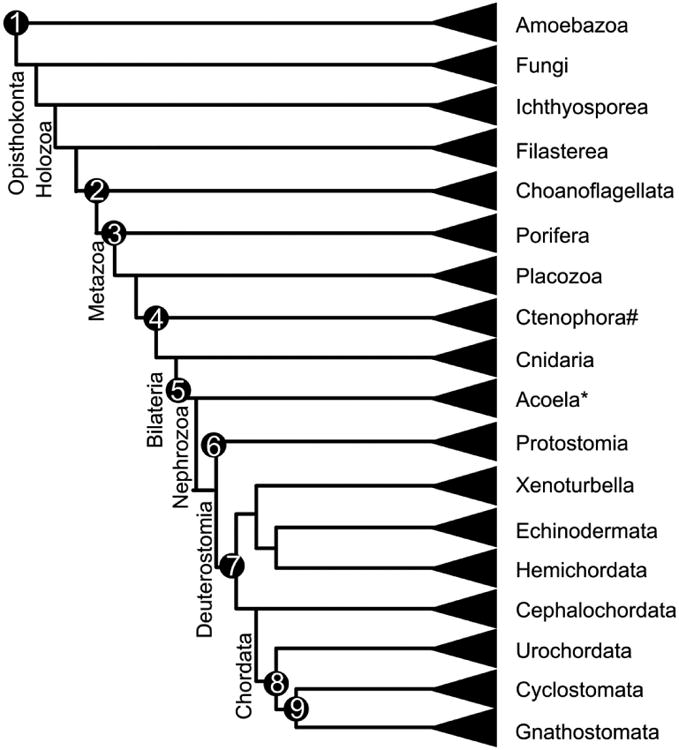Fig. 1.

This figure displays the relationship of single-celled and multicellular organisms and some critical events concerning the evolution of neurons and sensory systems. 1) Complicated life cycle with transient multicellularity; 2) most cellular communication signals are present, of Sox like and bHLH genes are present 3) class A bHLH genes and SoxB genes that can induce neurons are present. 4) epithelial nerve nets and sensory organs evolve; 5) miR-124 specific for neurons and miR-183 specific for sensory cells appear; 6) ventral central nervous system evolves; 7) ‘skin brains’ with chordate like patterning evolve; 8) neurons are concentrated in a dorsal neural tube and composite, organ like sensory cell groups appear. 9) Vertebrate sensory organs and nervous system appear. # note that the position of Ctenophora is disputed. *Acoela are sometimes combined with Xenoturbella, indicating perhaps limited molecular distinction between basic bilaterians and basic deuterostomes. Compiled after (Gyoja, 2014, Osigus, et al., 2013, Peterson, et al., 2013, Schnitzler, et al., 2014, Suga, et al., 2013, Swalla and Smith, 2008)
